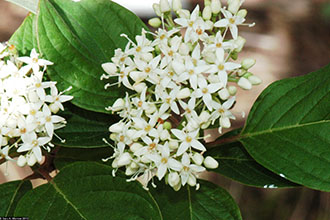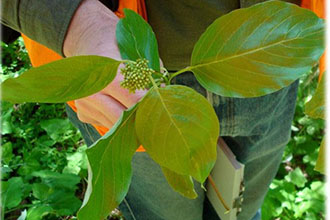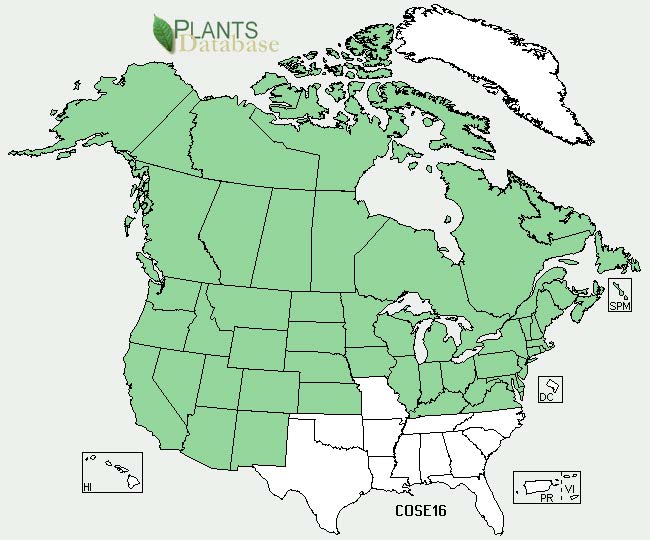Taxonomy: Kingdom - Plantae (plants). Subkingdom - Tracheobionta (vascular plants). Superdivision - Spermatophyta (seed plants). Division - Magnoliophyta (flowering plants). Class - Magnoliopsida (dicotyledons). Subclass - Rosidae. Order - Cornales. Family - Cornaceae (dogwood). Genus - Cornus L. Species - Cornus sericea L.
Ecology: Redosier dogwood is shade tolerant but generally grows best at intermediate to high light levels. Cover and size of redosier dogwood are often greater in open stands or canopy gaps than beneath heavily shaded canopies, but redosier dogwood persists and may be abundant in dense shade. Redosier dogwood is typically present throughout all stages of succession, but abundance is often greater in earlier than later stages. Similarly, redosier dogwood occupies open sites and occurs beneath closed canopies, but abundance is typically greater in sun than shade. Redosier dogwood tolerates disturbance and generally appears early in postdisturbance succession of shrublands, floodplains, forests, and old fields. Abundance of redosier dogwood is often greater many years after disturbance than immediately following disturbance. Redosier dogwood is common on the edges of lakes, ponds, within wetlands, and along streams. Not as tolerant of long-term root saturation as are some other shrubs, dogwood seems to prefer wetland margins where soils are nitrogen-rich, saturated, and shallowly inundated in the spring, and may be completely dry by late summer. It is tolerant of fluctuating water tables. The “osier” in redosier dogwood is derived from French, meaning “willow-like”; it is often called red willow because of its red stems.



